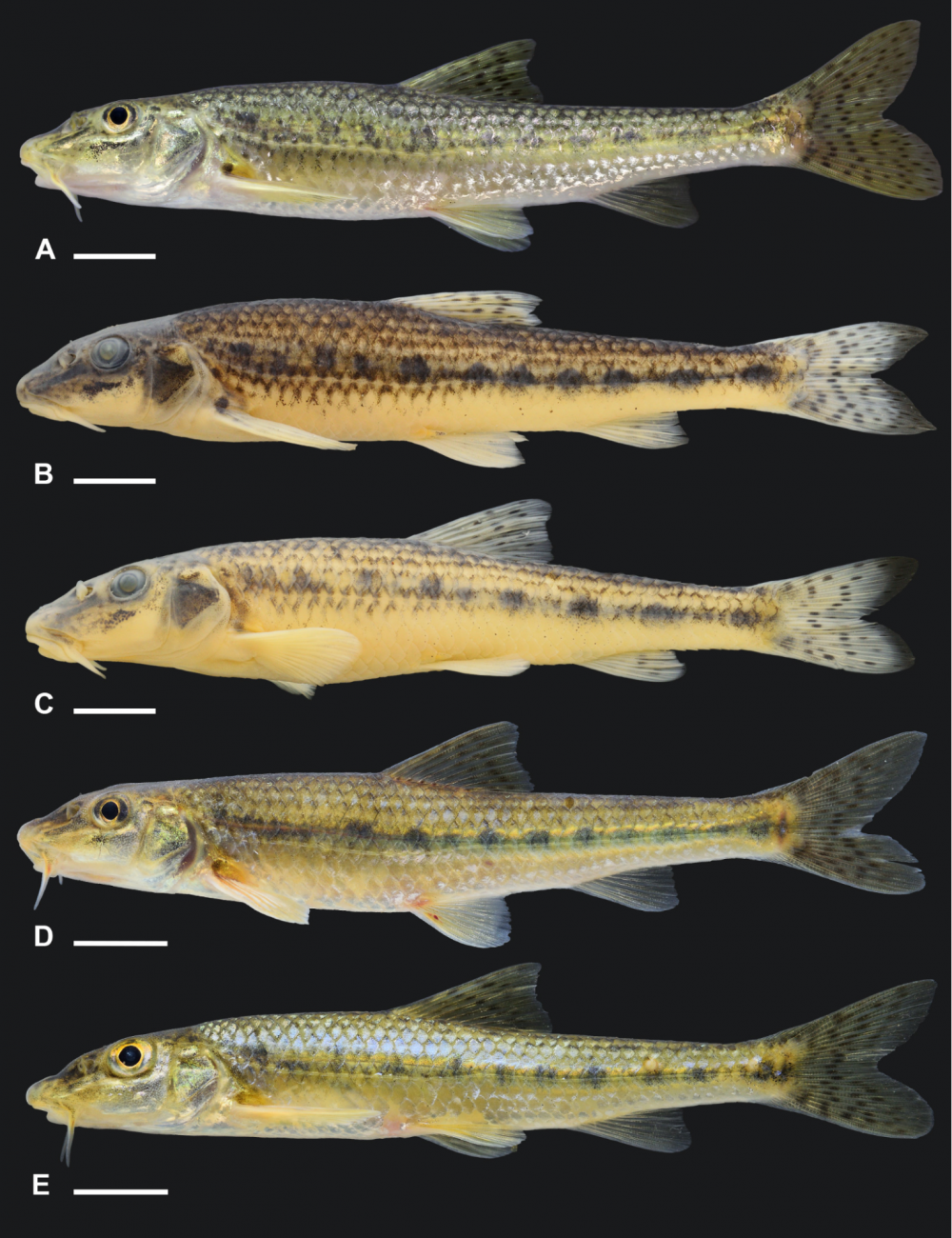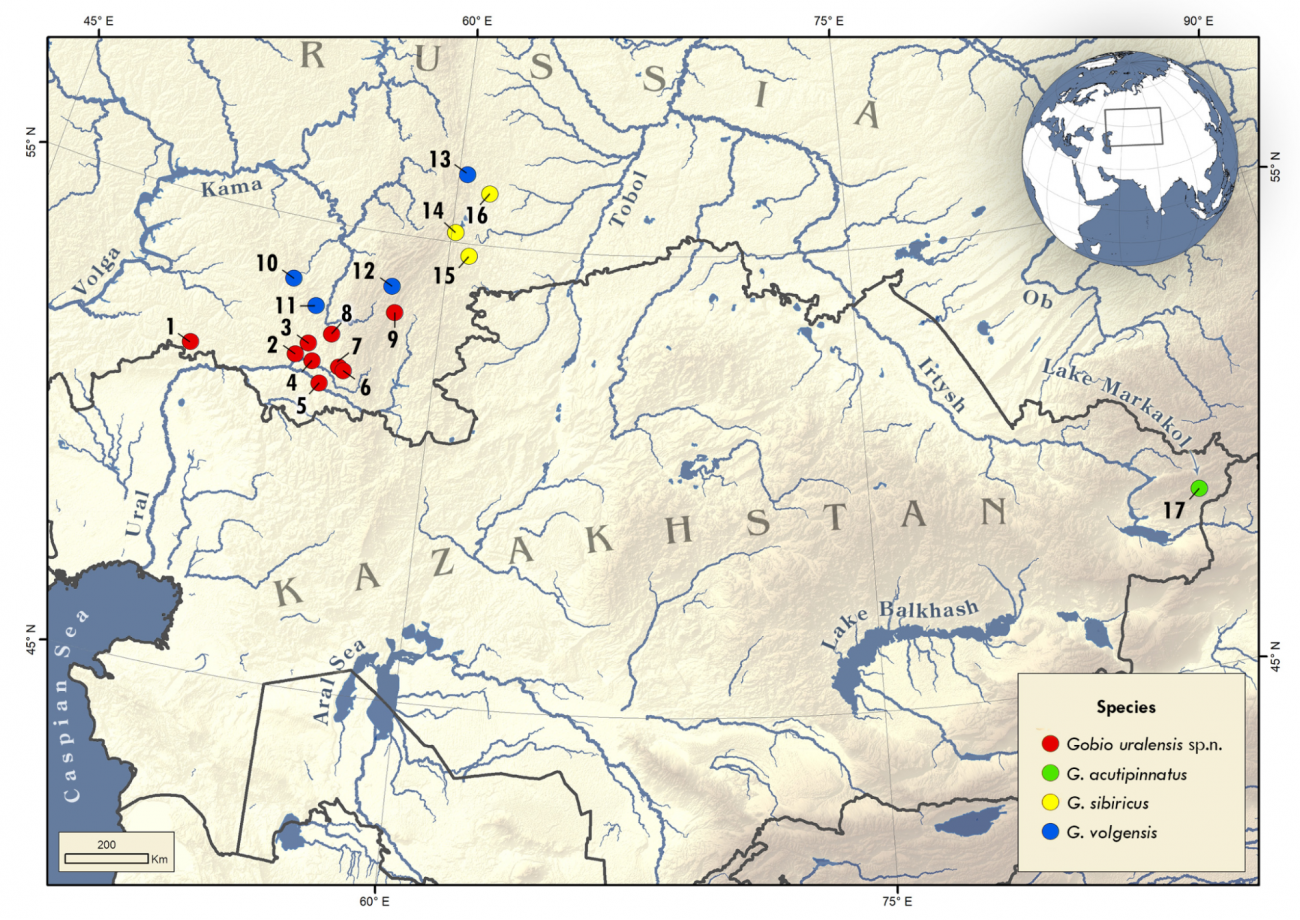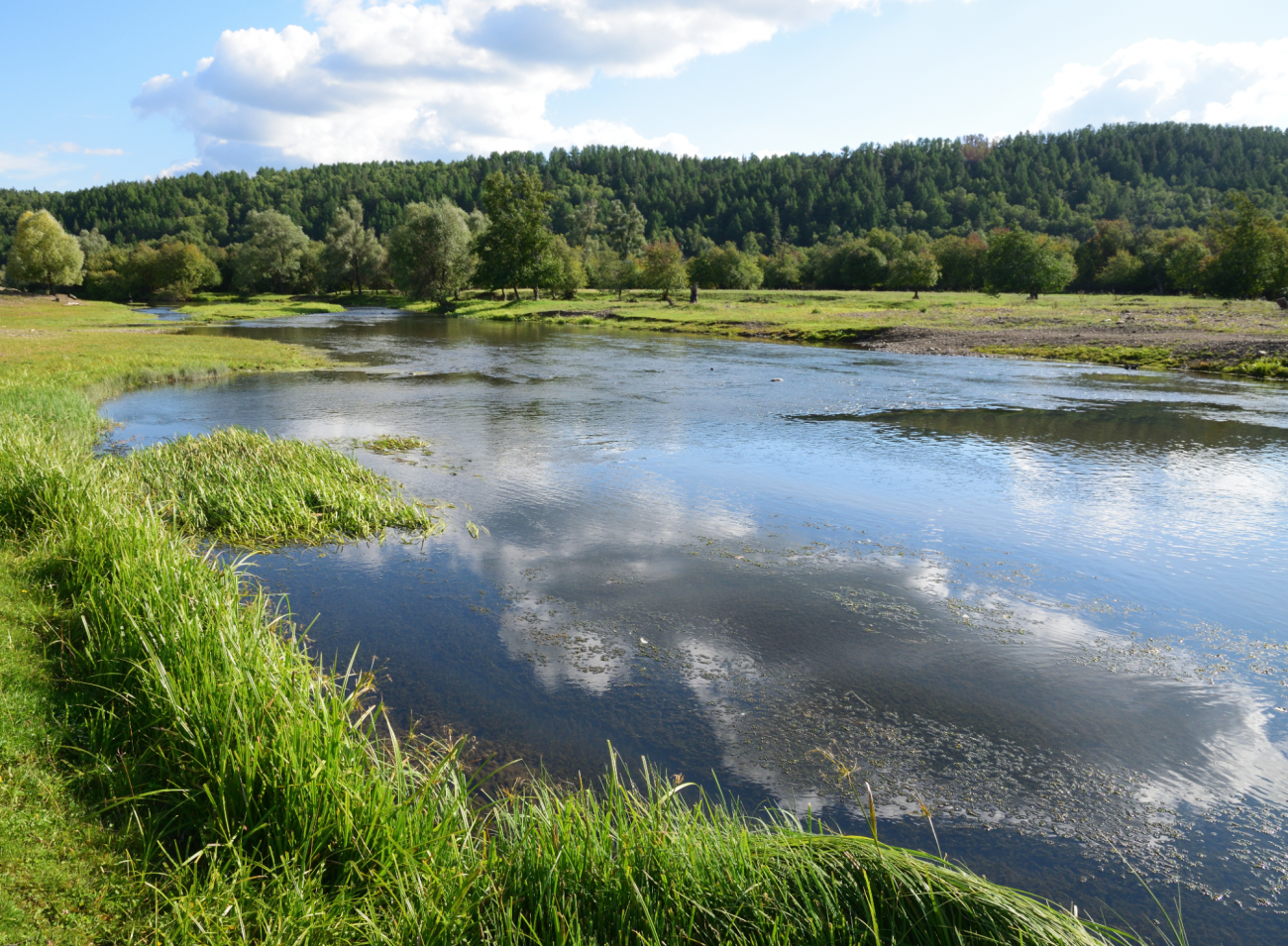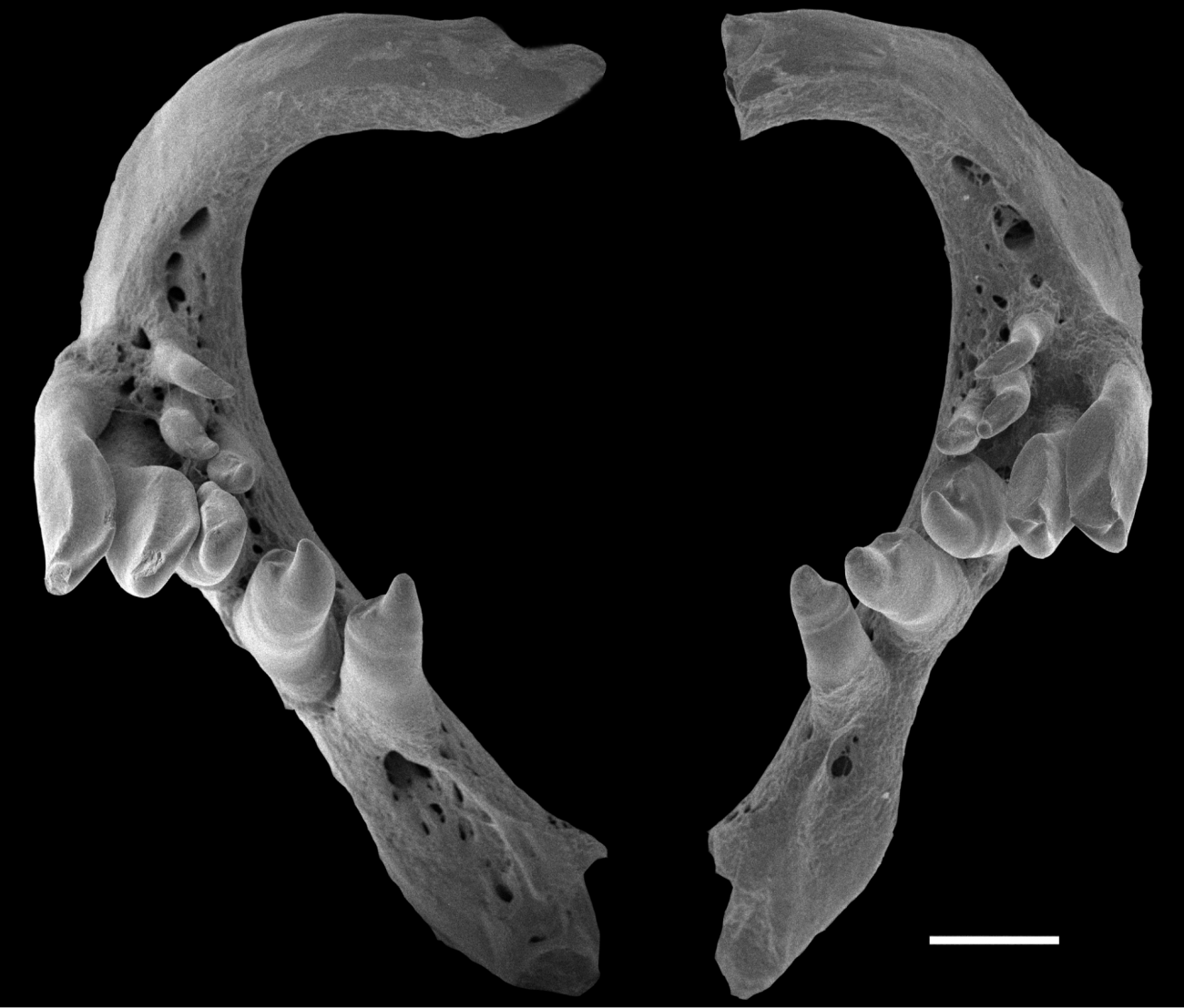
Scientists have described a new species of gudgeon from the Ural River basin and therefore named it Gobio uralensis. It turned out that this species is closest in external features (morphology) to the Volga gudgeon, which inhabits the European part of Russia, and genetically to the Markakol gudgeon, which inhabits the rivers of Kazakhstan and China. This may indicate that the Ural gudgeon appeared in the distant past as a result of hybridization of European and Asian gudgeon lines. The results of the study, supported by a grant from the Russian Science Foundation (RSF), were published in the journal Zoosystematics and Evolution.

Freshwater fish make up half of the total species diversity of fish, despite the fact that freshwater bodies occupy only 0.8% of the surface of the globe. At the same time, even in the most well-studied regions, previously unknown fish species are still sometimes found. For example, it was long believed that the gudgeon species Gobio gobio, which is widespread throughout almost all of Eurasia and looks different in different parts of the continent, is simply characterized by high intraspecific variability. However, scientists have shown using genetic analysis that there are several separate species of gudgeon in Europe and Asia, which were previously classified as the common gudgeon Gobio gobio. At the same time, there remains a high probability that not all species have been discovered and described.
Biologists from the A.N. Severtsov Institute of Ecology and Evolution RAS (Moscow), I.D. Papanin Institute of Biology of Inland Waters RAS (Borok) and the Zoological Museum of M.V. Lomonosov Moscow State University (Moscow) studied gudgeons living in the Ural, Volga and Ob basins to better understand what species are found there.

Figure 3. Type locality (the place where the most typical representatives were taken) of the Ural gudgeon Gobio uralensis, the Bolshoy Kizil River, a right tributary of the Ural, in Bashkortostan. Source: Turbanov et al. / Zoosystematics and Evolution, 2025.
The authors caught the fish, examined their external features (morphology) and conducted a genetic analysis. Using morphological and genetic analysis, the researchers identified four species of gudgeon - Gobio volgensis, Gobio sibiricus, Gobio acutipinnatus and a previously unknown species, which they called the Ural gudgeon Gobio uralensis. The choice of name is due to the fact that scientists discovered this species in the upper and middle reaches of the Ural River, which is considered the border between Europe and Asia.
The Ural gudgeon turned out to be most similar in appearance to the Volga gudgeon Gobio volgensis, which lives in the Volga in the European part of Russia, but is genetically very distant from it. Based on mitochondrial DNA sequences, which are often used to establish the relationship of organisms, Gobio uralensis was closest to the Markakol gudgeon Gobio acutipinnatus, which lives in the upper Irtysh basin (Ob River system) within Kazakhstan and China.

Accordingly, the intermediate position of the new species' range between Europe and Asia has affected its proximity to two groups of gudgeons at once: morphologically to the European ones, and genetically to the Asian ones. It is possible that the Gobio uralensis species could have arisen in the distant past as a result of hybridization of ancient lines leading to the modern species Gobio acutipinnatus and Gobio volgensis, when the Caspian basin (the Ural river system) could have been connected with the Ob river system through the Turgai trough during the glacial-interglacial periods of the Pleistocene (2.58 million years ago - 11.7 thousand years ago). During this connection, different evolutionary lines of fish were moving along with the water masses, penetrating into the range of other closely related species.

"Our study shows that the Ural River is inhabited by an endemic species of gudgeon, characteristic only of it. At the same time, Gobio uralensis is currently the only known endemic fish inhabiting this basin. In the future, we plan to study in more detail the genetic diversity and ancient contacts of various fish species inhabiting the upper reaches of the Caspian basin, which have a common watershed with Siberian rivers. This will allow us to better understand the origin of the local fauna and clarify the biogeographic relationships between Asian and European fish species," says Boris Levin, PhD in Biology, leading researcher at the Papanin Institute of Biology of Inland Waters of the Russian Academy of Sciences and the Severtsov Institute of Ecology and Evolution of the Russian Academy of Sciences, who is the head of the project supported by a grant from the Russian Science Foundation.
The work was published in the journal Zoosystematics and Evolution: On the border of Europe and Asia: Gobio uralensis, a new species of gudgeons (Cypriniformes, Gobionidae) from the Caspian Sea basin, Ilya S. Turbanov, Aleksey A. Bolotovskiy, Oleg N. Artaev, Aleksandr A. Gandlin, Marina A. Levina, Ekaterina D. Vasil’eva, Boris A. Levin, 101(2): 855-874 (https://zse.pensoft.net/article/147368/).
Related materials:
National Scientific Network: "Scientists have discovered a new species of fish on the border of Europe and Asia"
RAS: "A new species of fish has been discovered on the border of Europe and Asia"
Rambler: "A new species of fish has been discovered in the Ural River basin"
Zhukovsky Life: "A new species of gudgeon has been discovered in the Urals"
Naked Science: "A new species of fish has been discovered in the Urals"
Agro XXI: "Unique gudgeon are found in the Ural River and are found nowhere else in the world"
Indicator: "Scientists have discovered a new species of fish on the border of Europe and Asia"
XX2 century: "A new species of fish lives on the border of Europe and Asia"
MK: "A new species of fish has been discovered in the Ural River basin"
Nature.Kremlin: "A new species of fish has been discovered on the border of Europe and Asia"
